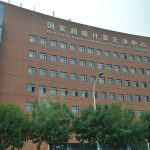For Beijing, risk reduction is a political goal, not an economic one. The high price that China has had to pay to become a leader in the sector and dominate supply chains, especially in green technology, has been worth it.
In recent years, Chinese policymakers have addressed dependence on foreign technology with an industrial policy of protecting national capabilities, not very different from the current European risk reduction policy (de-risking). Realizing China's weakening position in global supply chains and technologies for two decades, authorities launched plans to counter it, such as the 15-year plan for science and technology in 2006, and the 2015 Made in China 2025 with the objective of reduce dependence on foreign suppliers critical technology and emerging industries.
Advertising
This was not intended at the time as a way to reduce risks, but it reversed China's exposure to many of the same problems the EU now faces. Furthermore, the technological war with the United States, geopolitical tensions and Beijing's search for self-sufficiency are reinforcing this protectionist approach.
Although not all of Beijing's targeted sectors have become success stories, many select industries have grown and become competitive internationally, and in some dominant markets. In 2023, China will overtake Japan as the world's largest automobile exporter. In public transportation, China has become a strong competitor, including in high-speed rail and urban transportation. China is still years away from building reactors, next-generation chips and other high-tech equipment, but it is developing its industrial capabilities and technical know-how across strategic industries. The results are evident in most of these sectors, from medical technology to aerospace and military equipment.
However, nowhere is this success more surprising than in green technology. China's development plans have included clean energy, electric vehicles and critical minerals for years. It now wants to be at the forefront of the green technology revolution, with explicit policy objectives to be internationally competitive and foster its leadership in green technology. This has already been seen in the photovoltaic and battery sectors, and is currently being developed in the electric vehicle sector. Green hydrogen, energy transmission and storage technology, climate adaptation solutions and other sectors are also in different phases of the state support cycle, mobilizing large amounts of capital investment and already producing some “winners”.
'De-risking' is a political objective, not an economic one.
Not all industries will succeed, but planners are aware that strategic industrial policy is a long-term effort and accept that sunk costs and a national return on investment well below the global average are the price of success, as photovoltaic energy and electric vehicles demonstrate. For Beijing, risk reduction is a political goal, not an economic one. State support for R&D to establish the Chinese solar industry, for example, has been estimated at around $23 billion, support for the business sector at around $60 billion, generating a workforce of 60,000 workers and around thousands of patents registered in solar technology. Today it is a model to establish an economy focused on the use of sustainable technology.
In the field of new energies, China has promoted extensive policies to support national development and innovation, as well as traditional industries, such as steel. The promotion of high-tech “little giants” and the shift from their wasteful industrial policy to a more selective “accelerator state” are further reinforcing China's position in the sector. In green hydrogen, for example, China is still in the early stages, with constant investment mobilization. In older hydrogen technologies, such as alkaline electrolysis, China is already competitive on price, but is pouring huge resources into R&D and business support into more advanced production methods, such as proton exchange membrane (PEM) electrolysis. and the solid oxide electrolysis.
Now China enters a new phase characterized by overcapacity and the consolidation of a few domestic winners. Like other industries that thrive on state support, green hydrogen is likely to see a small number of domestic players form a strong industrial base with the ability to compete internationally. Current industry leaders, such as Siemens and Nucera, have every reason to expect a similar evolution to that of photovoltaics and batteries. Favorable contracting practices and subsidized price competitiveness of domestic suppliers add up to a powerful advantage for the technology.
China's industrialist approach has also focused on securing its position within supply chains. This includes domestic inputs and mineral processing, as well as investment in and ownership of critical resource suppliers abroad. Lithium, a key mineral for batteries, is a good example. China currently controls around 70% of lithium cell manufacturing for electric vehicles, despite only extracting 13% of the world's supply. As for polysilicon, a key ingredient in photovoltaic solar energy, it controls more than 80% of world production.
Beijing promotes new multilateral and bilateral alliances
China is also promoting new multilateral and bilateral alliances to secure markets for its growing industry. The $600 billion in exports to Europe is a risk that must be addressed by expanding into new markets that absorb Chinese products, in the likely event that the EU increases its tariffs and barriers. This is especially important given the cyclical overcapacity built into this export-oriented development model that can result in oversupply.
After propping up its industrial system for decades, China is miles ahead of the EU in the “promote, protect, associate”, even though China's financial resources are more limited than ever. Risk reduction the Chinese way is, above all, an investment in domestic industry that has increased supply chain security and fostered competitive Chinese technologies. Their politics are not as distracted by particular interests as individual corporate profits or by ideological notions of level playing field and infallible “invisible hands.”
Technocracy, including China's wasteful and overambitious industrial policy regime, has its limits, and is wasting public resources urgently needed to boost well-being, public services and consumption. However, systematic support for technology and industrial capacity can realize China's technocratic dreams. Beijing may have a system that is not perfect, but it is good enough for its purpose of establishing priority industries in a competitive global environment. Europeans would do well to learn from him.
Given the immense cost China pays to build and maintain domestic industrial capabilities, European leaders must realize how much political will and economic resources are needed to achieve anything remotely close to its manufacturing capabilities, or even to simply maintain the “eggs of gold” of Europe at home. Given the slow pace of our own ecological transition, time is of the essence and smart and agile policy is needed to manage our dependence on green technology. As Jessica Chen Weiss of Cornell University said: Don't try to be more Chinese than China.
This article has been translated from English from the MERICS website, and is part of a series about the strategies China to reduce vulnerabilities.













